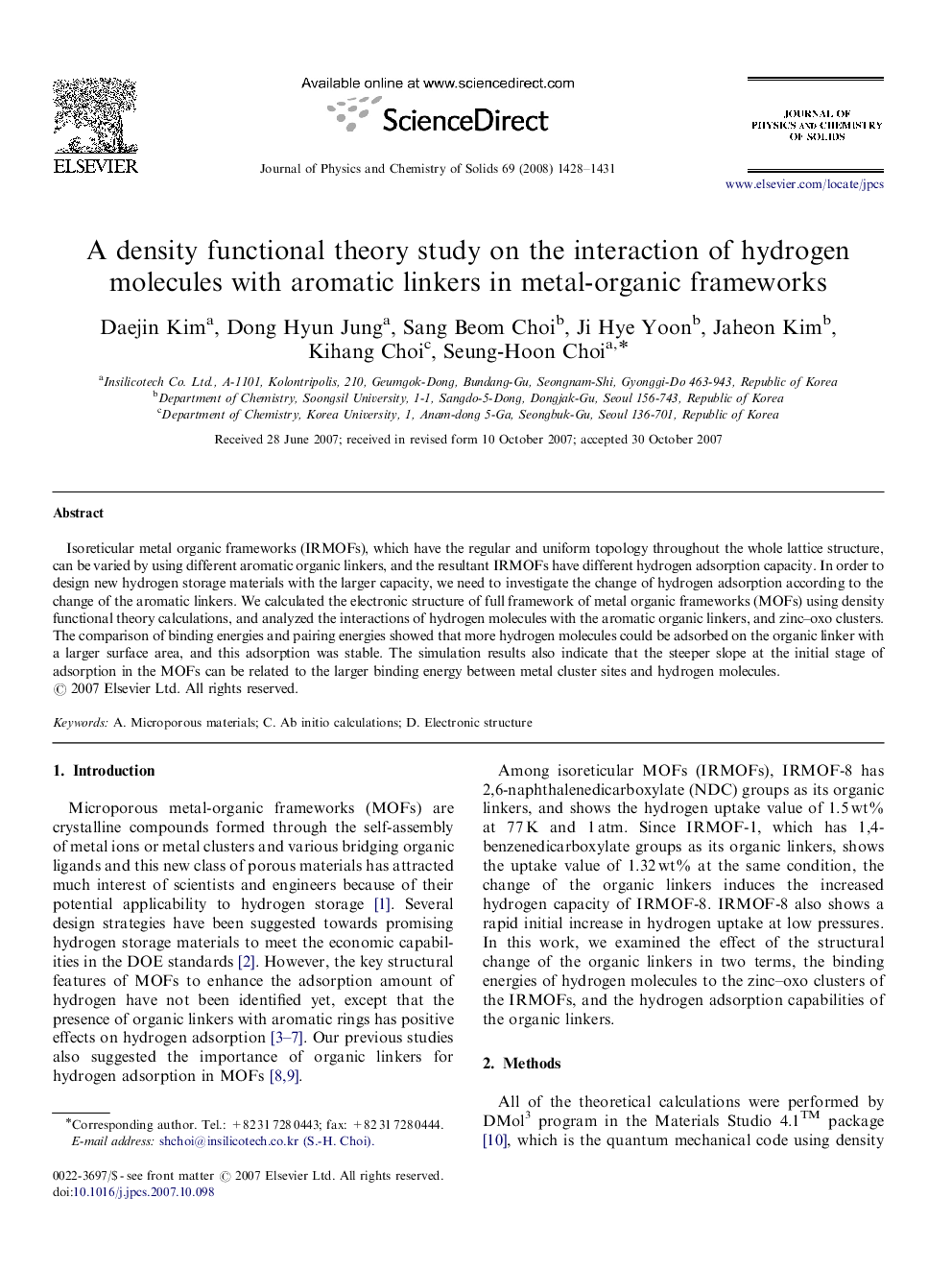| Article ID | Journal | Published Year | Pages | File Type |
|---|---|---|---|---|
| 1517604 | Journal of Physics and Chemistry of Solids | 2008 | 4 Pages |
Isoreticular metal organic frameworks (IRMOFs), which have the regular and uniform topology throughout the whole lattice structure, can be varied by using different aromatic organic linkers, and the resultant IRMOFs have different hydrogen adsorption capacity. In order to design new hydrogen storage materials with the larger capacity, we need to investigate the change of hydrogen adsorption according to the change of the aromatic linkers. We calculated the electronic structure of full framework of metal organic frameworks (MOFs) using density functional theory calculations, and analyzed the interactions of hydrogen molecules with the aromatic organic linkers, and zinc–oxo clusters. The comparison of binding energies and pairing energies showed that more hydrogen molecules could be adsorbed on the organic linker with a larger surface area, and this adsorption was stable. The simulation results also indicate that the steeper slope at the initial stage of adsorption in the MOFs can be related to the larger binding energy between metal cluster sites and hydrogen molecules.
